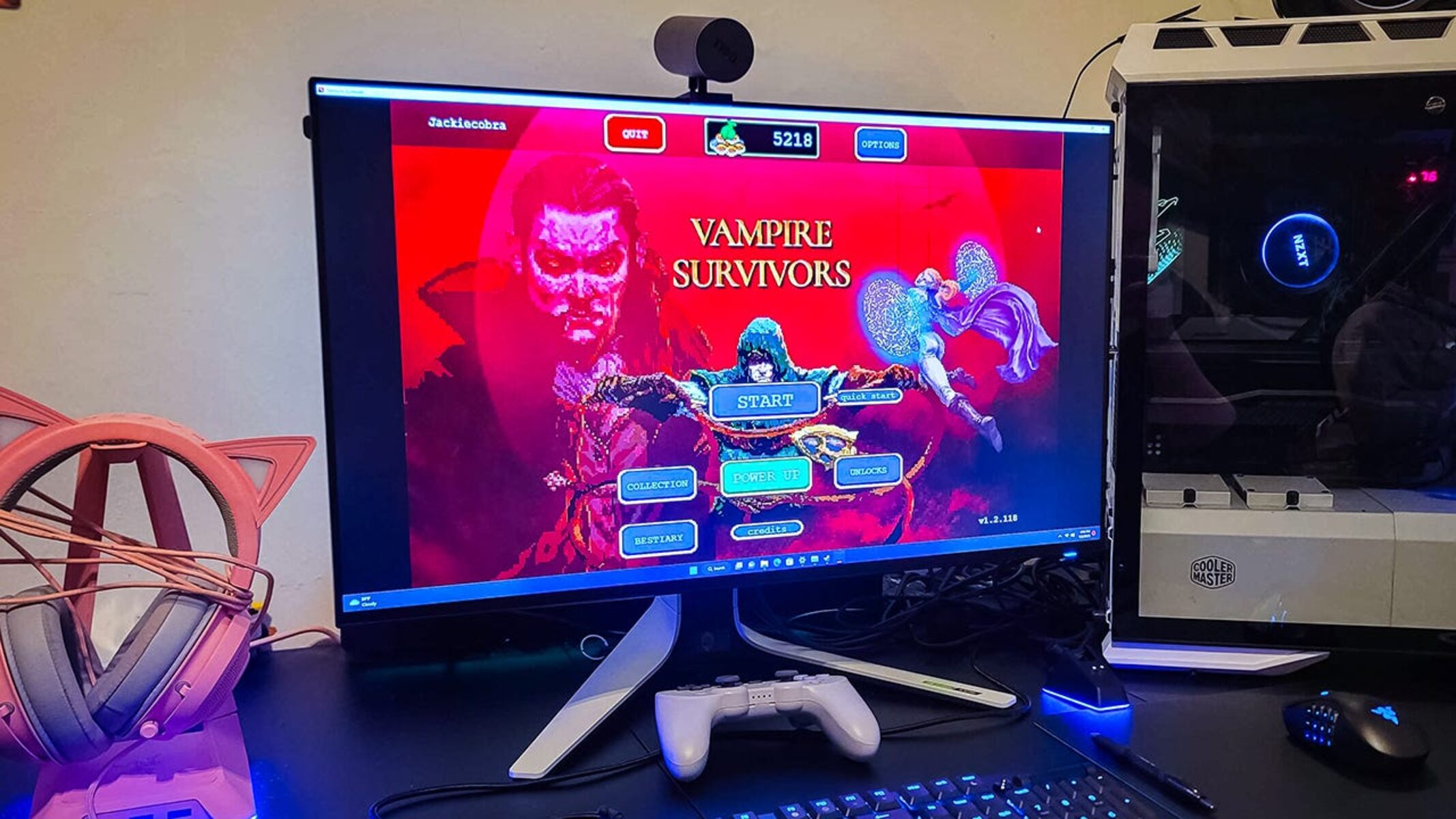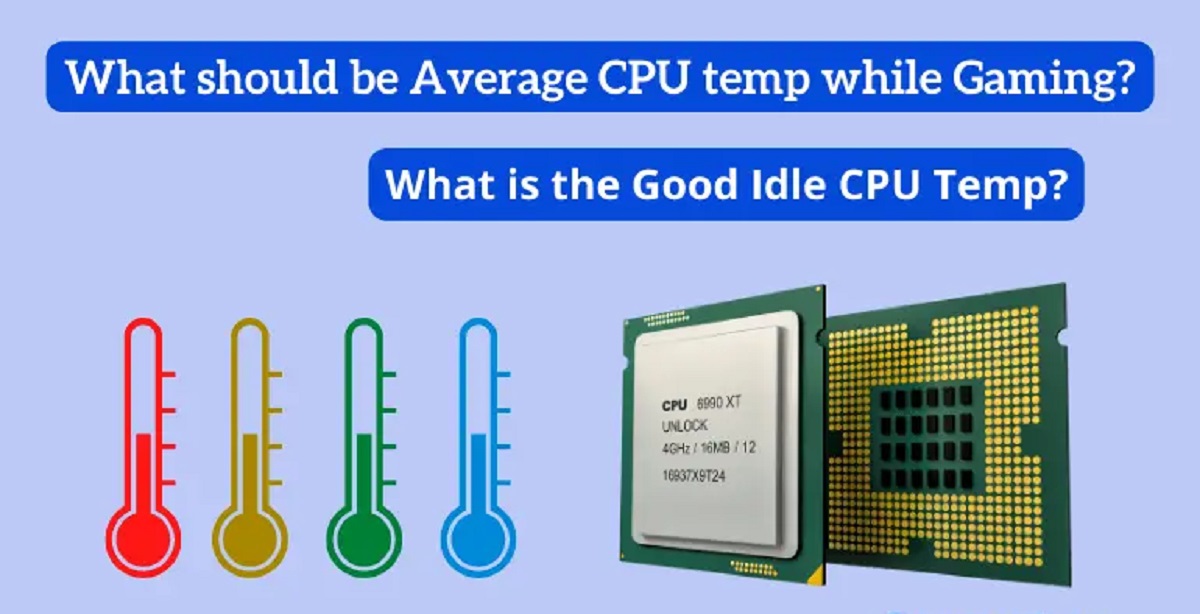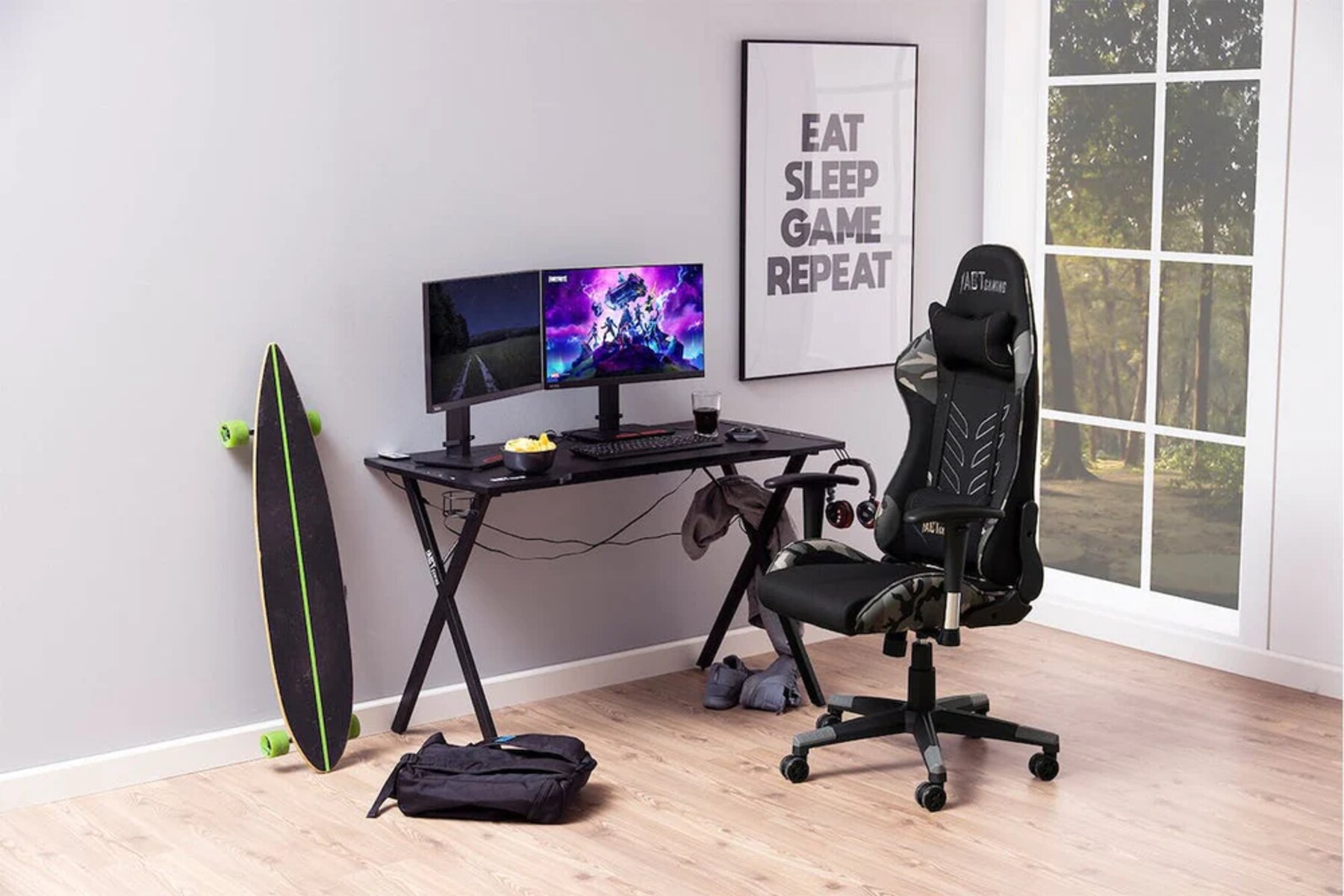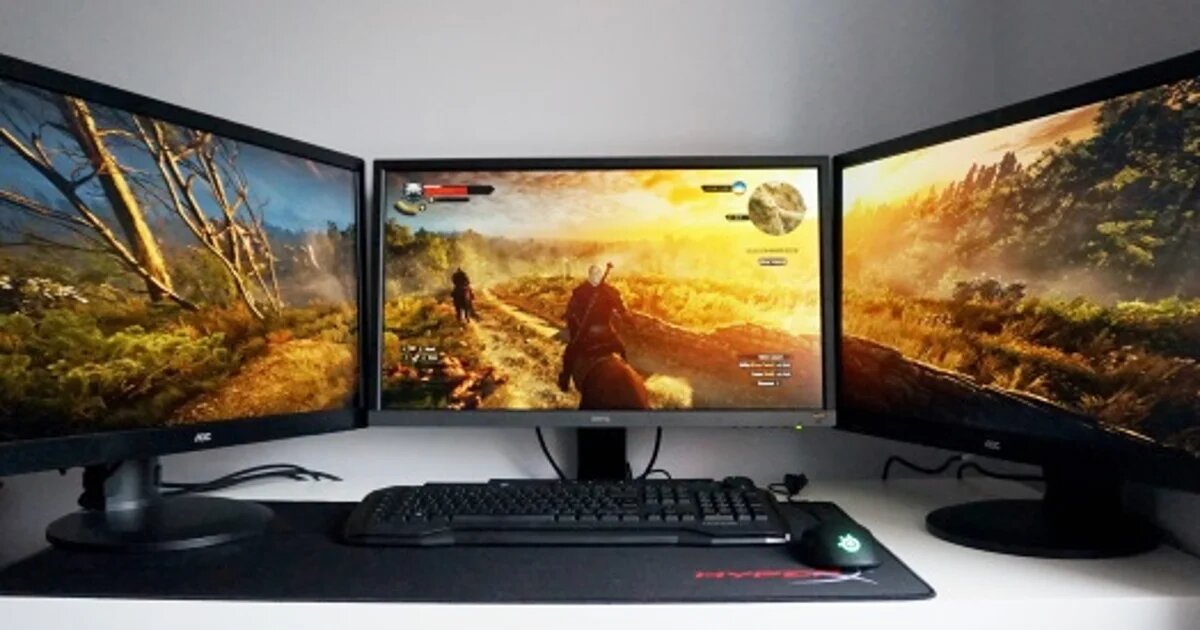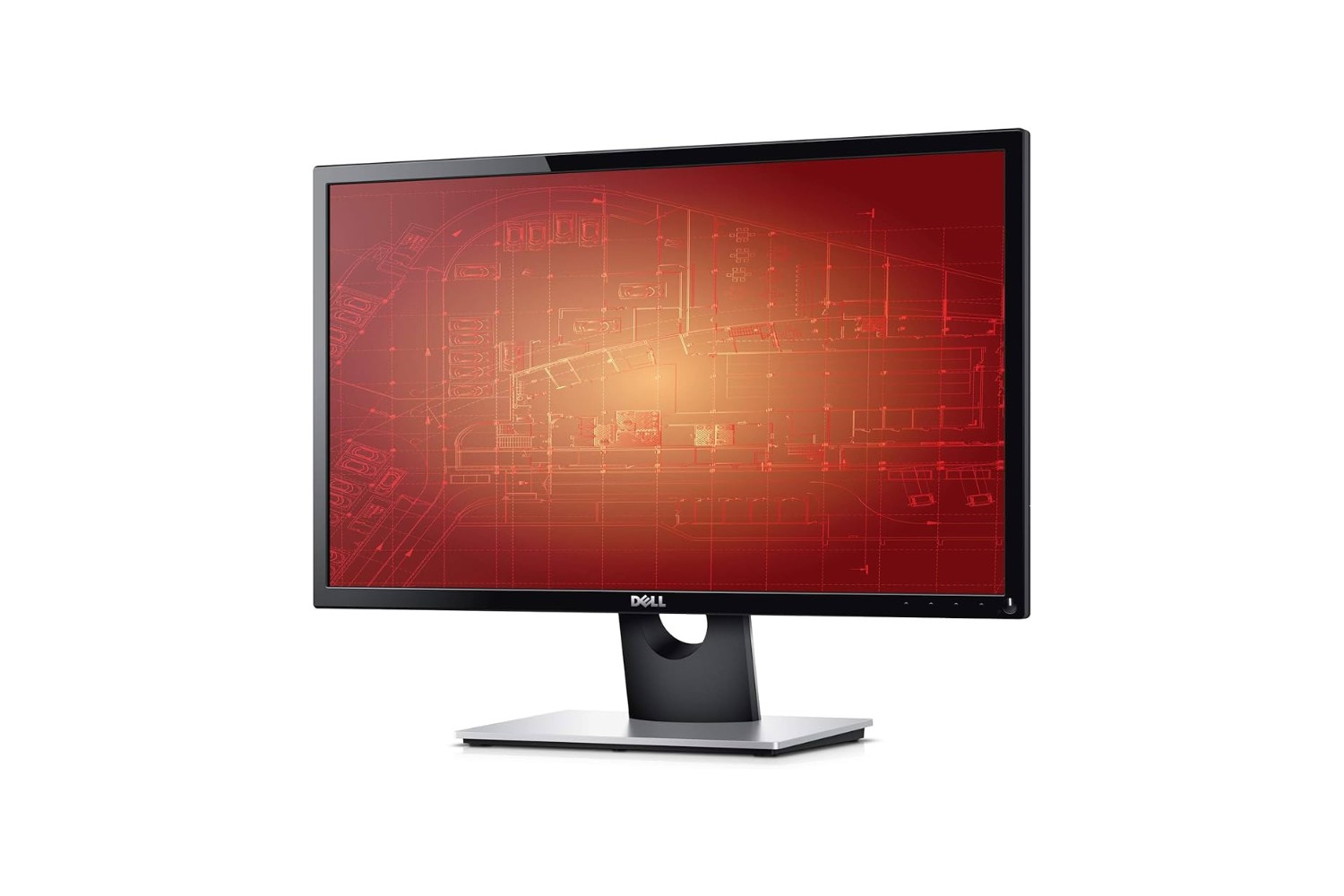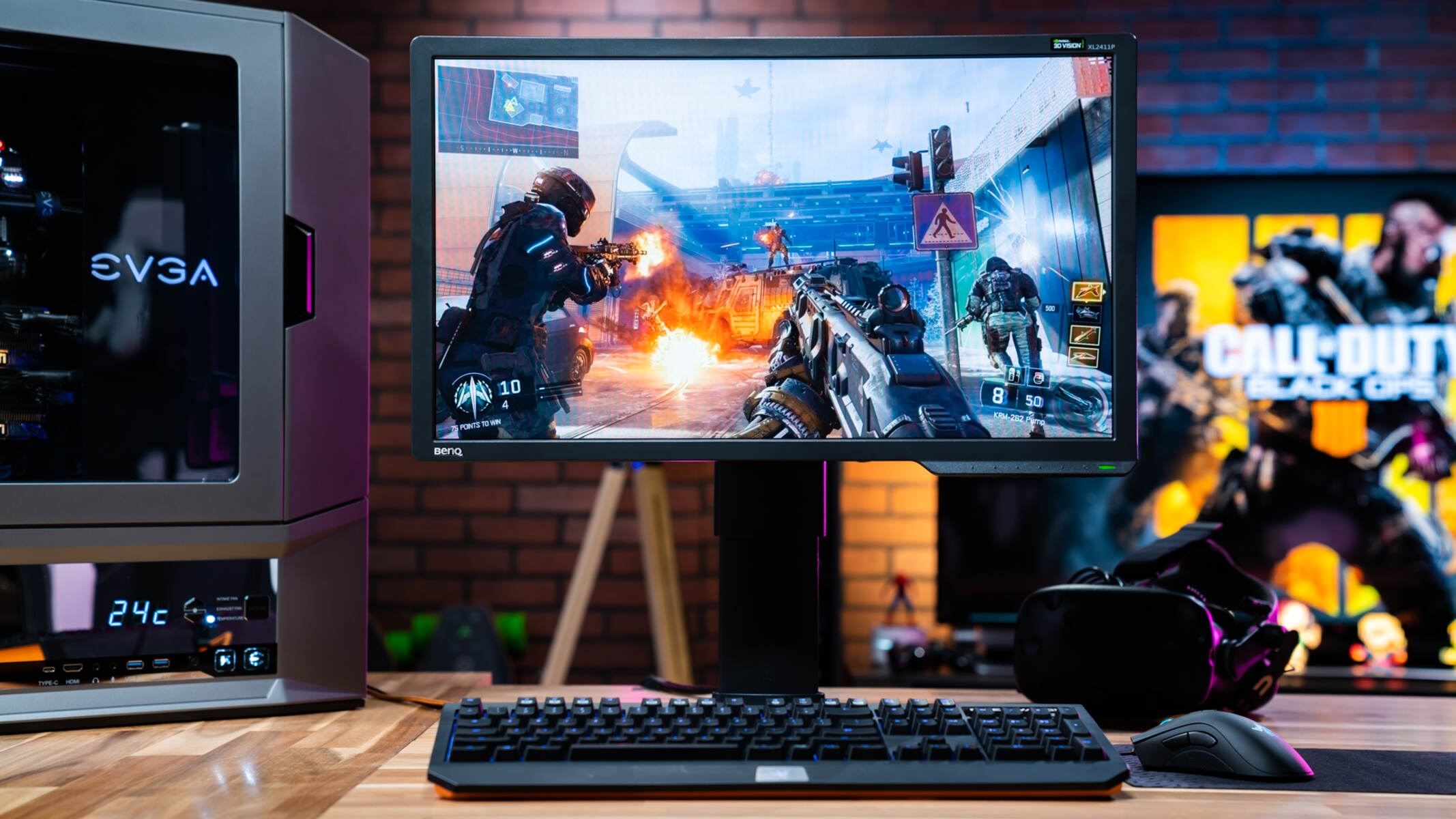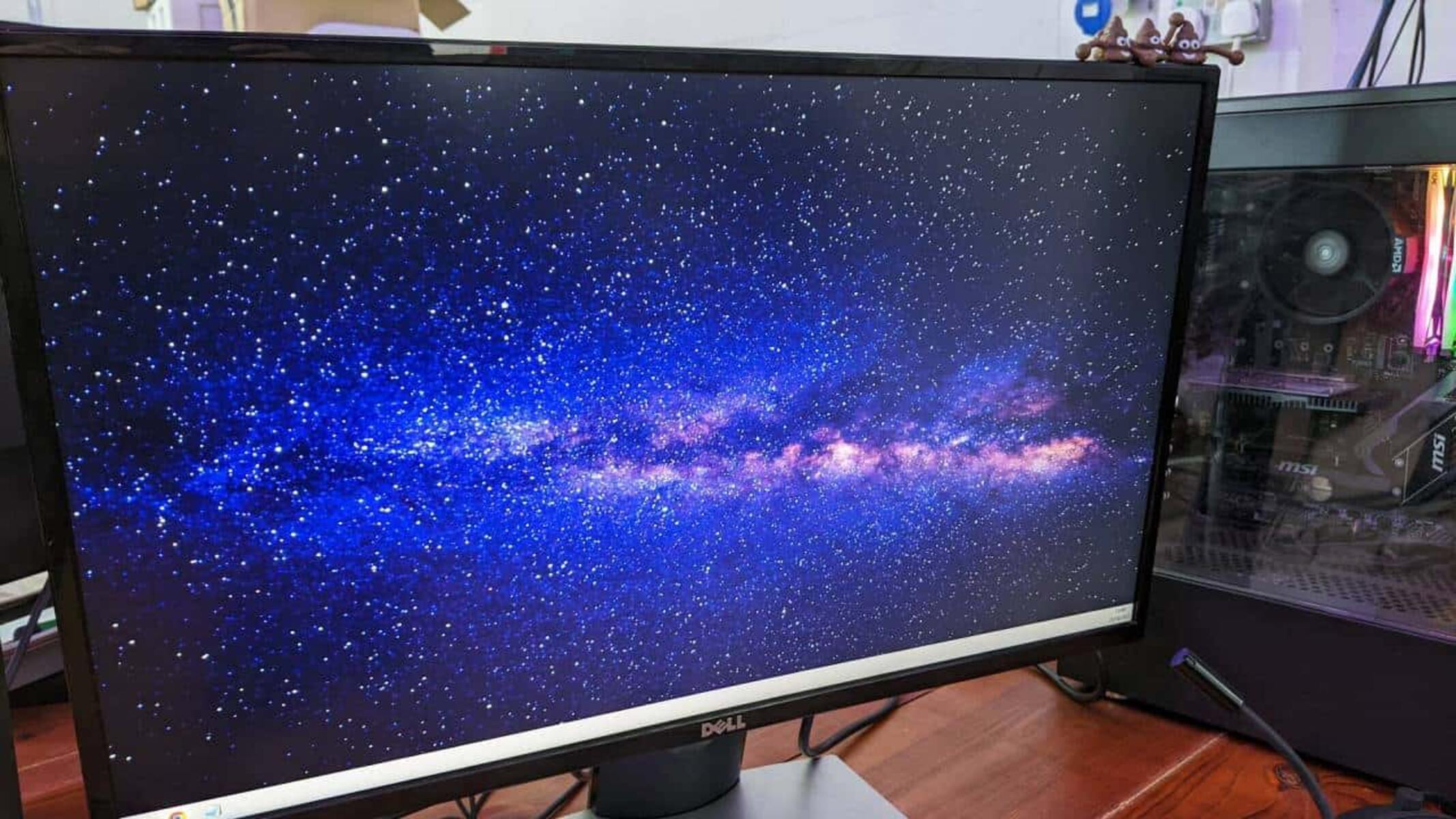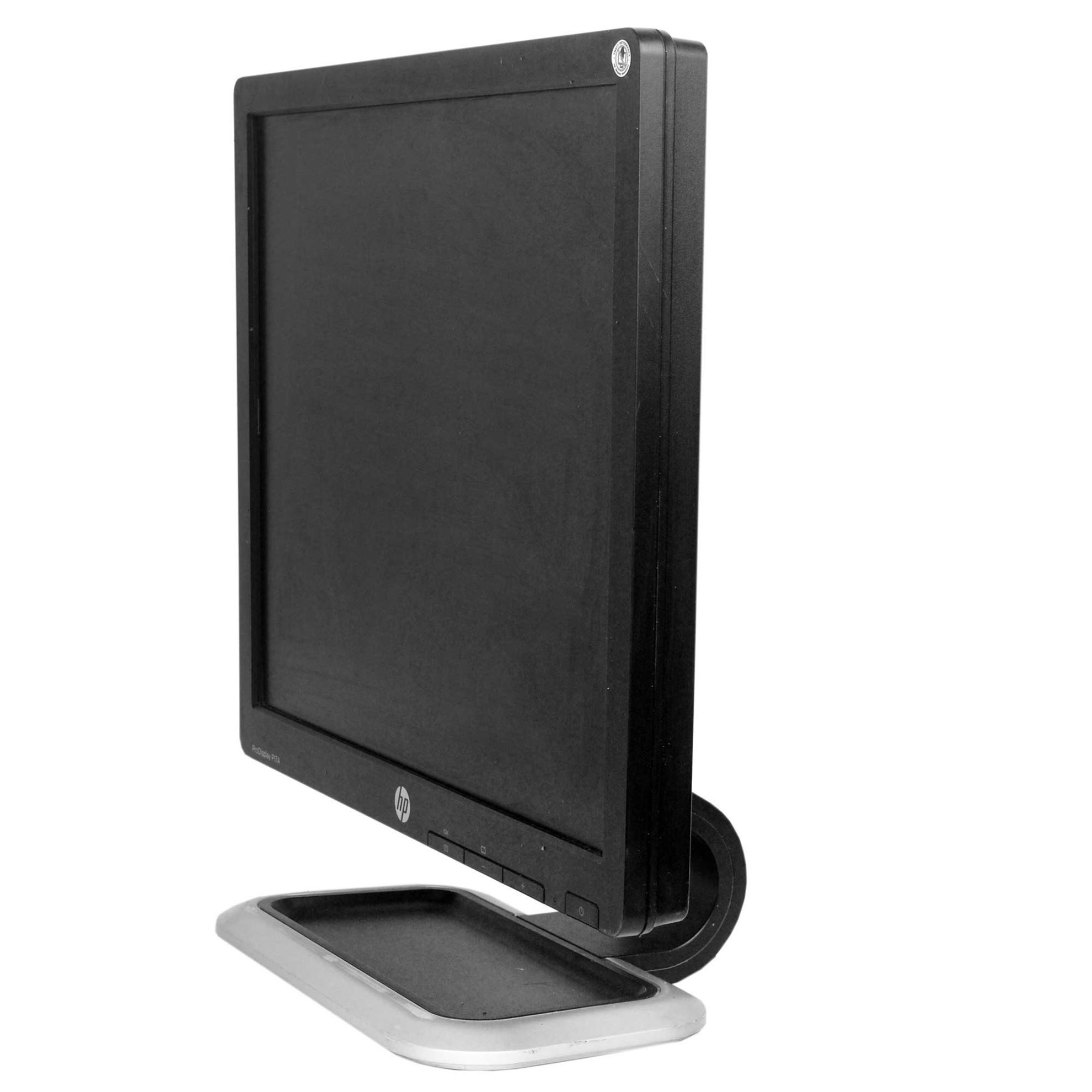Introduction
Gaming has become an incredibly popular form of entertainment, with millions of people around the world immersing themselves in virtual worlds and engaging in thrilling adventures. Whether you’re a casual gamer or a hardcore enthusiast, having the right equipment can greatly enhance your gaming experience. While much attention is often given to gaming PCs, consoles, and peripherals, one critical component that often gets overlooked is the gaming monitor.
A good gaming monitor is more than just a display; it is a gateway to immerse yourself in stunning visuals and responsive gameplay. It plays a pivotal role in delivering a smooth and enjoyable gaming experience, allowing you to fully appreciate the intricate details and vibrant colors of your favorite games. But what exactly makes a gaming monitor “good”? In this article, we will explore the key qualities and features to consider when searching for the perfect gaming monitor.
From panel types to screen size and resolution, response time to input lag, and various other factors, there are several crucial elements that can make or break the gaming experience. Understanding these factors and making an informed decision can make a significant difference in your overall gaming performance and enjoyment.
So, whether you’re a competitive gamer seeking lightning-fast responsiveness or an avid gamer who wants to immerse yourself in stunning visuals, this guide will help you navigate through the sea of options available in the market. We will dive deeper into the core features of a good gaming monitor, providing you with the knowledge to make an educated decision based on your specific needs and preferences.
Before we delve into the nitty-gritty details, it’s important to note that finding the perfect gaming monitor is ultimately a personal choice. What may be the ideal monitor for one person may not necessarily be the best fit for another. While there are some universal factors to consider, such as panel type or screen size, other features may vary depending on individual preferences and gaming habits.
What Is a Gaming Monitor?
A gaming monitor is a specialized display designed specifically for gaming purposes. Unlike regular monitors, which are primarily used for everyday computing tasks, gaming monitors are optimized to deliver superior graphics, responsiveness, and performance for gaming enthusiasts.
One of the key differentiating factors of a gaming monitor is its refresh rate. The refresh rate refers to the number of times the monitor updates the image on the screen per second. Higher refresh rates, such as 144Hz or even 240Hz, offer smoother and more fluid gameplay, making it easier to track fast-moving objects and reducing motion blur. This can be a significant advantage in competitive gaming scenarios where split-second reactions can make all the difference.
In addition to refresh rate, gaming monitors also prioritize response time. Response time is the time it takes for a pixel to transition from one color to another. A lower response time, usually measured in milliseconds (ms), results in faster pixel transitions and reduces image ghosting and motion blur. This is especially crucial for fast-paced games where quick movements occur frequently.
Another essential feature of gaming monitors is adaptive sync technology. This technology helps to eliminate screen tearing and stuttering by synchronizing the monitor’s refresh rate with the GPU’s rendering rate. There are two main types of adaptive sync technologies available: AMD FreeSync and NVIDIA G-Sync. FreeSync is compatible with AMD graphics cards, while G-Sync works exclusively with NVIDIA graphics cards.
Gaming monitors also come in different panel types, including Twisted Nematic (TN), Vertical Alignment (VA), and In-Plane Switching (IPS). Each panel type has its own advantages and disadvantages. TN panels offer fast response times and high refresh rates but may have limited viewing angles and color accuracy. VA panels provide better color reproduction and contrast ratios, but they may have slower response times. IPS panels offer excellent color reproduction and wide viewing angles but may have higher response times.
When considering a gaming monitor, it’s crucial to account for factors such as screen size and aspect ratio. A larger screen can provide a more immersive gaming experience, but it may also require more desk space. Aspect ratio, on the other hand, determines the width and height of the screen. The most common aspect ratios for gaming monitors are 16:9 and 21:9, with the latter offering a wider field of view.
Overall, a gaming monitor is a specialized display that prioritizes features such as high refresh rates, low response times, and adaptive sync technology to provide gamers with an optimal visual and responsive gaming experience. By understanding these key features and considering your own gaming preferences, you can make an informed decision when selecting a gaming monitor that suits your needs.
Why Do You Need a Good Gaming Monitor?
Investing in a good gaming monitor is essential for any gaming enthusiast. While it may be tempting to settle for a regular monitor, a dedicated gaming monitor offers several advantages that can greatly enhance your gaming experience.
First and foremost, a good gaming monitor ensures that you can fully appreciate the visual quality of your games. Gaming monitors often have higher resolutions, such as 1080p, 1440p, or even 4K, which means sharper images and more vibrant colors. With a higher resolution, you’ll be able to see finer details and intricacies in the game world, immersing yourself in breathtaking visuals.
Additionally, a good gaming monitor provides superior response times and lower input lag. Response time refers to how quickly the pixels on the screen can change colors, resulting in smoother motion and reducing motion blur. Lower input lag means that the actions you perform with your mouse or controller register on the screen with minimal delay, giving you a more responsive and immersive gaming experience.
For competitive gamers, every millisecond counts. Having a high refresh rate gaming monitor, such as 144Hz or 240Hz, can provide a significant advantage. With a higher refresh rate, the screen updates more frequently, resulting in smoother motion and making it easier to track fast-moving objects. This can be a game-changer in fast-paced games where split-second reactions can determine the outcome.
Another reason why a good gaming monitor is essential is the support for adaptive sync technology. Adaptive sync, such as AMD FreeSync or NVIDIA G-Sync, synchronizes the monitor’s refresh rate with the graphic card’s output, eliminating screen tearing and stuttering. This ensures that you have a seamless and tear-free gaming experience, enhancing immersion and visual quality.
Furthermore, gaming monitors often come with additional features and technologies, such as HDR (High Dynamic Range) and advanced color accuracy. HDR displays offer a wider range of colors and better contrast ratios, resulting in more lifelike and immersive visuals. Additionally, monitors with accurate color reproduction allow you to experience games as the developers intended, showcasing the game’s artistry and design in its true colors.
Ultimately, a good gaming monitor is an investment in your gaming setup that can significantly enhance your overall gaming experience. Whether you’re a casual gamer who enjoys visually stunning games or a competitive gamer seeking every advantage, a dedicated gaming monitor provides the visual fidelity, responsiveness, and immersive experience that can take your gaming sessions to the next level.
Important Factors to Consider
When searching for a good gaming monitor, there are several important factors you should consider to ensure that you make the right choice for your gaming needs. Each factor plays a crucial role in determining the overall performance and visual experience of the monitor.
One of the first factors to consider is the panel type. As mentioned earlier, gaming monitors come in different panel types, including TN, VA, and IPS. TN panels offer faster response times and higher refresh rates, making them ideal for competitive gamers. VA panels provide better color reproduction and contrast ratios, making them a great choice for immersive single-player experiences. IPS panels offer excellent color accuracy and wide viewing angles, making them suitable for gamers who prioritize visual quality.
Screen size and aspect ratio are also key considerations. A larger screen can provide a more immersive gaming experience, but it’s important to ensure that you have enough desk space to accommodate it comfortably. Aspect ratio determines how wide the screen is compared to its height. The most common aspect ratios for gaming monitors are 16:9 and 21:9. The wider 21:9 aspect ratio offers a larger field of view and can enhance immersion in games that support it.
Resolution and refresh rate are crucial factors to consider as well. The resolution determines the number of pixels on the screen, with higher resolutions offering sharper and more detailed visuals. Common resolutions for gaming monitors include 1080p, 1440p, and 4K. The refresh rate refers to how many times the monitor updates the image per second and is measured in Hertz (Hz). Higher refresh rates, such as 144Hz or 240Hz, result in smoother and more fluid motion, enhancing the overall gaming experience.
In addition, response time and input lag are important factors to assess. Response time refers to how quickly pixels can change colors, affecting the smoothness of motion and reducing motion blur. Lower response times are desirable for fast-paced games. Input lag, on the other hand, measures the delay between an input from your controller or keyboard and the corresponding action appearing on the screen. Lower input lag ensures a more responsive gaming experience and reduces any potential frustration caused by delays.
Other factors to consider include HDR capability and color accuracy. High Dynamic Range (HDR) displays offer a more extensive range of colors and better contrast ratios, resulting in more vivid and lifelike visuals. Color accuracy is important for experiencing games as intended by the developers, ensuring that the colors are true and vibrant.
Connectivity options are also worth considering, as having multiple input ports such as HDMI and DisplayPort can accommodate various gaming devices and offer flexibility in connecting your monitor to different systems.
Lastly, it’s important to consider your budget and the price range that you’re comfortable with. Gaming monitors come in a wide range of prices, and setting a budget will help you narrow down your choices and find the best monitor that fits both your gaming needs and financial constraints.
By considering these important factors, you can make an informed decision and select a gaming monitor that offers the optimal combination of features and performance for your gaming preferences.
Panel Type
When choosing a gaming monitor, one of the crucial factors to consider is the panel type. The panel type greatly influences the overall visual quality, color accuracy, viewing angles, and response times of the monitor.
There are three main panel types commonly used in gaming monitors: Twisted Nematic (TN), Vertical Alignment (VA), and In-Plane Switching (IPS).
Twisted Nematic (TN) panels are known for their fast response times and high refresh rates, making them ideal for competitive gaming. TN panels offer excellent motion clarity, reducing motion blur and ghosting. Additionally, TN panels tend to be cost-effective and budget-friendly, making them a popular choice for gamers on a tight budget. However, TN panels often have limited viewing angles and lower color accuracy compared to other panel types. Colors may appear washed out or distorted when viewed from extreme angles, which can be a drawback for those who value accurate color representation.
Vertical Alignment (VA) panels excel in contrast ratios and color reproduction, offering deeper blacks and better color saturation. VA panels provide excellent image quality and better viewing angles compared to TN panels. They are suitable for gamers who prioritize vibrant visuals and immersive experiences. However, VA panels can suffer from slower response times compared to TN panels, resulting in potential motion blur and ghosting in fast-action games.
In-Plane Switching (IPS) panels offer the best color accuracy, wide viewing angles, and excellent image quality. IPS panels reproduce colors with great precision, resulting in rich and vibrant visuals. They also provide wider viewing angles, allowing you to see consistent and accurate colors even when observing the monitor from different perspectives. IPS panels are popular among gamers who value accurate color representation and visual quality. However, IPS panels typically have slower response times compared to TN panels, although newer IPS panels have made significant advancements in reducing this drawback.
Each panel type has its own strengths and weaknesses, and the choice depends on your specific needs and preferences as a gamer. If you prioritize fast-paced competitive gaming and require quick response times, a TN panel may be the best option. If you prefer immersive single-player experiences with vibrant visuals and deep contrast, a VA panel may be more suitable. And if accurate color reproduction and wide viewing angles are critical, an IPS panel is the way to go.
It’s important to note that advancements in panel technology continue to be made, and there are variations and improvements within each panel type. For example, advanced TN panels, called TN Film or TN+Film, offer better color accuracy compared to traditional TN panels, although they still fall short of IPS and VA panels in that aspect. Additionally, there are variations of VA panels, such as VA/Vertical Alignment and MVA/Multi-Domain Vertical Alignment, each with their own characteristics and performance.
To determine which panel type is best suited for you, consider your gaming preferences, budget constraints, and the specific features that matter most to you, such as color accuracy, response times, and viewing angles. By understanding the strengths and weaknesses of each panel type, you can make an informed decision and select a gaming monitor that delivers the visual experience you desire.
Screen Size and Aspect Ratio
When choosing a gaming monitor, two important factors to consider are screen size and aspect ratio. These aspects greatly influence the immersion, visual experience, and practicality of the monitor for your gaming setup.
Screen size refers to the diagonal measurement of the monitor’s display area, typically measured in inches. The size of the monitor can significantly impact your gaming experience, with larger screens providing a more immersive feel. A larger screen allows for a wider field of view, making you feel more immersed in the game world. However, it is important to note that a larger screen also requires more desk space. So, consider your gaming area and available space when deciding on the appropriate screen size.
Aspect ratio determines the ratio between the width and height of the monitor’s display area. The two most common aspect ratios for gaming monitors are 16:9 and 21:9. The 16:9 aspect ratio is the standard for most monitors and provides a balanced and versatile experience. It suits a wide range of games and multimedia content. On the other hand, the 21:9 aspect ratio, also known as ultrawide, offers a wider and more immersive field of view. Ultrawide monitors are especially popular among gamers because they provide a greater sense of immersion in games that support the wider aspect ratio.
The choice of screen size and aspect ratio ultimately depends on your personal preference and gaming habits. If you primarily play competitive games where quick reflexes are crucial, a smaller screen size, such as 24 inches, may be sufficient. A smaller screen also allows for easier visibility and reduced eye movement, making it easier to keep track of on-screen elements and enemies. Conversely, if you enjoy open-world adventures or visually stunning games, a larger screen size, such as 27 inches or even 32 inches, can provide a more immersive experience by displaying more details and creating a larger field of view.
When it comes to aspect ratio, the decision depends on the types of games you play and your media consumption habits. The standard 16:9 aspect ratio is well-suited for most types of content and offers a versatile experience for both gaming and multimedia. However, if you enjoy cinematic experiences and want a wider view, particularly in games that support ultrawide displays, then a 21:9 aspect ratio might be a better choice. It allows for a more expansive and immersive gaming experience, providing a wider field of vision.
It’s important to consider your gaming setup and personal preferences when deciding on the screen size and aspect ratio of your gaming monitor. Keep in mind the available desk space, your viewing distance, and the types of games you typically play. By finding the right balance between screen size and aspect ratio, you’ll create an immersive and enjoyable gaming experience tailored to your preferences.
Resolution and Refresh Rate
Resolution and refresh rate are two critical factors to consider when choosing a gaming monitor. These specifications greatly impact the visual clarity and fluidity of motion, allowing you to fully enjoy your gaming experience.
Resolution refers to the number of pixels displayed on the screen horizontally and vertically. The higher the resolution, the sharper and more detailed the visuals. Common resolutions for gaming monitors include 1080p (1920×1080), 1440p (2560×1440), and 4K (3840×2160). If you’re gaming on a larger screen or want to see finer details in your games, opting for a higher resolution monitor can greatly enhance your visual experience. Keep in mind that higher resolutions may require more powerful hardware to achieve optimal performance.
Refresh rate refers to how many times the monitor updates the displayed image per second, measured in Hertz (Hz). A higher refresh rate provides smoother and more fluid motion on screen, reducing motion blur and enhancing the overall gaming experience. Gaming monitors typically offer refresh rates of 60Hz, 144Hz, or even 240Hz. If you primarily play fast-paced games or engage in competitive gaming, a higher refresh rate monitor can provide a significant advantage by offering a more responsive and reactive gameplay experience.
It’s important to note that resolution and refresh rate are interdependent, and your hardware capabilities should be considered. While higher resolutions can provide sharper visuals, they may require a more powerful graphics card to maintain smooth performance. Similarly, achieving high refresh rates may also require a capable GPU. Ensure that your gaming rig can handle the combination of resolution and refresh rate you desire.
When selecting the resolution and refresh rate for your gaming monitor, consider the types of games you play and your hardware capabilities. If you enjoy visually demanding games with stunning graphics, a higher resolution monitor can bring out the details and textures. However, if you primarily play fast-paced competitive games, a higher refresh rate monitor can provide a smoother gameplay experience and a competitive edge.
It’s worth mentioning that some gaming monitors offer features such as overclocking, allowing you to increase the refresh rate beyond the standard specification. While this can provide an even higher refresh rate, it’s important to weigh the benefits against the potential risks and trade-offs, such as increased power consumption and potential overclocking artifacts.
In summary, resolution and refresh rate are crucial factors to consider when selecting a gaming monitor. Higher resolutions offer sharper visuals and more detailed graphics, while higher refresh rates provide smoother motion and reduce motion blur. Consider your gaming preferences, the types of games you play, and your hardware capabilities to find the right balance and choose a gaming monitor that delivers the optimal combination of resolution and refresh rate for an immersive gaming experience.
Response Time
Response time is an essential factor to consider when selecting a gaming monitor. It determines how quickly the pixels on the screen can change colors and transition from one shade to another. The response time is typically measured in milliseconds (ms).
A lower response time means faster pixel transitions, resulting in reduced motion blur and ghosting. This is particularly important for fast-paced games where quick movements occur frequently. A lower response time helps to maintain clear visuals during fast action sequences, providing a smoother and more immersive gaming experience.
Gaming monitors generally offer response times ranging from 1ms to 5ms. Monitors with a 1ms response time are considered optimal for fast-paced gaming, as they can effectively eliminate motion blur. However, it’s important to note that the advertised response time is often the “best-case scenario” and may only apply to specific color transitions. In most cases, real-world performance may vary across different colors and transitions.
It’s worth mentioning that the responsiveness and performance of a gaming monitor’s response time can be influenced by other factors, such as the panel type. TN panels generally have the fastest response times, making them highly suitable for competitive gaming. VA and IPS panels, on the other hand, may have slightly higher response times but offer superior color accuracy and wider viewing angles.
It’s important to consider your gaming preferences when choosing the response time of your gaming monitor. If you primarily play fast-paced games, such as first-person shooters or racing games, a lower response time, such as 1ms or 2ms, can effectively reduce motion blur and ghosting, providing a smoother and more responsive gaming experience. However, if you prioritize visual quality and color accuracy, you may need to sacrifice a bit of response time for a better panel type, such as VA or IPS.
While a low response time is desirable, it’s important to note that the human eye may not always perceive the difference between response times that are close in value. Factors such as eye sensitivity, individual perception, and overall graphics performance can also impact the perceived smoothness of motion on a monitor.
When selecting a gaming monitor, it’s recommended to read reviews and consider real-world testing results to get an accurate understanding of the monitor’s response time performance. Additionally, keep in mind that other factors such as input lag and refresh rate also play a role in the overall responsiveness of the monitor.
Ultimately, the response time of a gaming monitor is an important consideration for gamers who value smooth and clear visuals during fast-paced gameplay. By understanding the relationship between response time and your gaming preferences, you can make an informed decision and choose a gaming monitor that delivers the optimal level of responsiveness for an enjoyable gaming experience.
Input Lag
Input lag is an important factor to consider when selecting a gaming monitor. It refers to the delay between when a command is inputted, either through a mouse, keyboard, or controller, and when the corresponding action is displayed on the screen. A lower input lag ensures a more responsive gaming experience, reducing the delay between your actions and their depiction on the monitor.
High input lag can negatively impact your gaming performance, particularly in fast-paced games that require quick reflexes and precise timing. The delay between your input and the on-screen action can be frustrating and may result in mistimed movements or missed opportunities. Therefore, minimizing input lag is crucial, especially for competitive gamers seeking every possible advantage.
Input lag can be influenced by several factors, including the monitor’s internal processing, signal transmission, and the device you’re using to play games. While the monitor is a critical component in determining input lag, other factors, such as the responsiveness of the peripherals and the performance of the graphics card, also play a role.
When comparing gaming monitors, it’s important to look for models that advertise low input lag. Some manufacturers may provide specific input lag measurements, although it’s essential to understand the methodology behind the measurement and consider real-world testing results. Reading reviews and seeking feedback from other gamers who have used the specific monitors can provide valuable insight into the input lag performance.
It’s worth noting that while low input lag is desirable, the extent to which it affects gaming performance can vary depending on the individual. Competitive gamers who rely on split-second reactions may be more sensitive to input lag than casual gamers who play at a more relaxed pace. Additionally, the type of games played can also influence the perceived impact of input lag. For example, strategic turn-based games may be less affected by input lag compared to fast-paced first-person shooters.
Reducing input lag requires a combination of factors, including selecting a gaming monitor with low input lag, using responsive peripherals, and ensuring that your gaming system has adequate processing power. It’s also important to note that while a gaming monitor can offer low input lag, it doesn’t guarantee that the entire gaming setup will have minimal input lag. The overall input lag can be influenced by the entire chain of devices and their respective responsiveness.
In summary, input lag directly affects the responsiveness and performance of a gaming monitor. Minimizing input lag is essential for a smooth and immersive gaming experience, particularly for competitive gaming. When selecting a gaming monitor, consider models that advertise low input lag, consider real-world testing results, and take into account the overall responsiveness of your gaming setup.
HDR and Color Accuracy
HDR (High Dynamic Range) and color accuracy are significant factors to consider when choosing a gaming monitor. These features greatly impact the visual quality, color reproduction, and overall immersive experience while gaming.
HDR technology expands the range of colors and contrast ratios that a monitor can display, resulting in more vibrant and lifelike visuals. HDR monitors can reproduce a wider gamut of colors, providing a greater depth of saturation and more realistic color representation. Darker blacks and brighter whites create a more dynamic and realistic image, enhancing the visual experience. HDR technology is particularly beneficial for games that are designed with HDR content, as it allows you to fully appreciate the game’s rich color palette and intricate details.
Color accuracy is another crucial aspect to consider, as it ensures that the colors displayed on the monitor are true and accurate to the original content. A gaming monitor with good color accuracy will faithfully reproduce the intended colors as envisioned by the game developers. This is especially important for games that rely heavily on vibrant visuals, such as open-world adventures or fantasy genres, where the nuances of color can greatly contribute to the immersion and atmosphere.
When browsing for gaming monitors, it is essential to look for models that support HDR standards, such as HDR10 or Dolby Vision. These standards ensure compatibility with HDR content and guarantee a more immersive visual experience. It’s worth noting that the true benefits of HDR can be fully realized when paired with a high-quality panel, capable of reproducing a wide color gamut and achieving high levels of contrast and brightness.
Color accuracy, on the other hand, can be influenced by various factors, including the panel type (such as IPS panels known for their accurate color reproduction), the color calibration capabilities of the monitor, and the ability to adjust color settings to match your preferences. It’s recommended to read reviews and look for monitors that offer good color accuracy out of the box or those that can be calibrated for the most accurate color representation.
Both HDR and color accuracy greatly contribute to the visual immersion and overall gaming experience. However, it’s important to note that the availability of HDR content and the level of color accuracy in games can vary. Not all games may support HDR or possess extensive color grading, which can limit the visual benefits of these features. Nevertheless, investing in a gaming monitor with HDR support and good color accuracy ensures that you can fully appreciate the visual enhancements when gaming in compatible titles.
In summary, HDR and color accuracy are crucial considerations when choosing a gaming monitor. HDR technology provides more vibrant and dynamic visuals with a wider range of colors and better contrast ratios. Color accuracy ensures that the colors displayed on the monitor are true to the original content, enhancing immersion and visual fidelity. By selecting a gaming monitor that supports HDR standards and offers good color accuracy, you can enjoy a more immersive and visually captivating gaming experience.
Adaptive Sync Technology
Adaptive Sync technology is a crucial feature to consider when choosing a gaming monitor. It helps to eliminate screen tearing and stuttering by synchronizing the refresh rate of the monitor with the output rate of the graphics card.
Screen tearing occurs when the monitor’s refresh rate and the graphics card’s output rate are not synchronized, resulting in a visible line or tear on the screen. This can be distracting and negatively impact the visual experience, especially during fast-paced gameplay. Adaptive Sync technology resolves this issue by dynamically adjusting the monitor’s refresh rate to match the output rate of the graphics card.
There are two main types of Adaptive Sync technology in the market: AMD FreeSync and NVIDIA G-Sync. Both technologies serve the same purpose but work differently and are compatible with different graphics cards.
AMD FreeSync is an open standard available to all monitor manufacturers. It works with AMD graphics cards and dynamically adjusts the monitor’s refresh rate within a specified range to match the output of the graphics card. This eliminates screen tearing and provides a smoother gaming experience. FreeSync monitors are often more affordable compared to G-Sync monitors since there are no additional hardware modules required.
NVIDIA G-Sync, on the other hand, is a proprietary technology developed by NVIDIA. It also synchronizes the refresh rate between the monitor and the graphics card but requires a dedicated hardware module in the monitor. This makes G-Sync monitors more expensive compared to FreeSync monitors. However, G-Sync provides a wider range of refresh rate variability and typically offers a more consistent and seamless experience.
It’s important to note that in recent years, NVIDIA has introduced G-Sync Compatible, which allows certain FreeSync monitors to work with NVIDIA graphics cards. This expands the options for NVIDIA users who want to take advantage of Adaptive Sync technology without investing in a dedicated G-Sync monitor.
Adaptive Sync technology greatly improves the visual experience by reducing screen tearing and providing smoother gameplay. It ensures that the images rendered by the graphics card are correctly synchronized with the monitor’s refresh rate, resulting in a seamless and tear-free display.
When choosing a gaming monitor, consider whether you have an AMD or NVIDIA graphics card and the availability of Adaptive Sync technology. If you have an AMD graphics card, look for a monitor that supports AMD FreeSync. If you have an NVIDIA graphics card, consider whether you want to invest in a dedicated G-Sync monitor or look for a G-Sync Compatible FreeSync monitor.
Overall, Adaptive Sync technology is an essential feature to consider when selecting a gaming monitor. It enhances the visual experience by eliminating screen tearing and providing a smoother, more immersive gaming experience. Whether you choose AMD FreeSync or NVIDIA G-Sync, the implementation of Adaptive Sync technology can greatly enhance your gameplay and make your gaming sessions more enjoyable.
Connectivity Options
When choosing a gaming monitor, considering the available connectivity options is crucial to ensure compatibility with your gaming setup and devices. The connectivity options determine how you can connect your monitor to different devices, such as gaming consoles, PCs, and other peripherals.
The most common and essential connectivity options for gaming monitors include HDMI (High-Definition Multimedia Interface), DisplayPort, and DVI (Digital Visual Interface). These connections allow you to transmit both audio and video signals between your gaming devices and the monitor.
HDMI is the most widely used connection type and is supported by most gaming consoles, PCs, and media devices. It offers a straightforward plug-and-play solution, providing high-quality audio and video transmission. HDMI also supports various video and audio formats, including High-Definition (HD) and Ultra-High-Definition (UHD) resolutions, as well as surround sound audio.
DisplayPort is another popular connectivity option, especially for PC gamers. It provides similar capabilities to HDMI, including high-resolution support and audio transmission. DisplayPort generally offers better bandwidth and refresh rate capabilities than HDMI, making it suitable for high-performance gaming. DisplayPort is commonly found in gaming monitors and high-end graphics cards.
DVI (Digital Visual Interface) is an older connectivity option, but it is still found on some gaming monitors and graphics cards. DVI provides a reliable digital connection, supporting high-resolution displays. However, DVI does not carry audio signals, so you will need to rely on alternate audio connections if audio transmission is necessary.
In addition to these primary connection options, some gaming monitors may also feature additional connectivity ports, such as USB (Universal Serial Bus) ports and audio output jacks. USB ports are useful for connecting peripherals, such as gaming mice, keyboards, and controllers, directly to the monitor, reducing cable clutter and providing convenient access. Audio output jacks allow you to connect external speakers or headphones directly to the monitor, providing an alternative audio output option.
When selecting a gaming monitor, assess your gaming devices and consider which connectivity options are essential for your setup. Ensure that the monitor has the necessary ports to connect your gaming console, PC, or other devices. Also, check the versions of HDMI and DisplayPort supported by both the monitor and your gaming devices to ensure compatibility with the desired resolution and refresh rate.
It’s worth noting that not all gaming monitors will have all the connectivity options mentioned above. Some budget or entry-level models may offer limited connectivity, while high-end gaming monitors may provide a more comprehensive range of options. Consider your specific needs and make sure the monitor offers the necessary connections to support your gaming devices and peripherals.
By considering the available connectivity options, you can ensure compatibility and create a seamless connection between your gaming devices and the gaming monitor. This allows for easy setup and enhances the overall gaming experience by providing reliable and versatile connectivity.
Price Range and Budget Considerations
When searching for a gaming monitor, price range and budget considerations play a significant role in your decision-making process. Gaming monitors come in a wide range of prices, and determining your budget beforehand will help you narrow down your options and find the best monitor that fits your needs and financial constraints.
Higher-priced gaming monitors often come with advanced features and specifications, such as higher refresh rates, lower response times, and better color accuracy. These premium monitors are typically well-suited for competitive gaming and enthusiasts who demand the best performance and visual quality. However, it’s important to consider whether these top-tier features are necessary for your specific gaming requirements.
On the other hand, budget-friendly gaming monitors can still offer a good gaming experience without breaking the bank. They may have slightly lower refresh rates, response times, or color accuracy, but they can still provide enjoyable gaming sessions for casual gamers. It’s essential to assess your gaming habits and prioritize the features that matter most to you. This way, you can find a gaming monitor that offers a balance between performance, affordability, and your personal gaming preferences.
Consider the specific games you play and the hardware requirements they demand. If you primarily play less demanding titles or are not a competitive gamer, a more affordable gaming monitor with standard features may be suitable for your needs. Look for monitors that offer a good compromise between price and performance, ensuring that you get the best value for your budget.
It’s worth noting that as technology advances, more budget-friendly options often emerge with features that were once exclusive to higher-priced monitors. As a savvy shopper, it’s wise to research and compare different models, read reviews, and consider the performance-to-price ratio of each monitor. This way, you can maximize your budget and find a gaming monitor that offers a good balance between cost and quality.
When determining your budget, also consider the longevity of the gaming monitor. Investing in a high-quality monitor that will last for several years can be a wise choice, as it may provide a better long-term value compared to purchasing a cheaper monitor that may need to be replaced sooner.
Ultimately, the price range and budget considerations for a gaming monitor will vary based on your individual preferences, gaming habits, and financial situation. Set a budget that aligns with your priorities and capabilities, and then explore the options within that range. By doing so, you can find a gaming monitor that offers the best combination of features, performance, and affordability for your gaming needs.
Conclusion
Choosing the right gaming monitor is a crucial decision that can greatly enhance your gaming experience. By considering various factors such as panel type, screen size, resolution, refresh rate, response time, input lag, HDR and color accuracy, adaptive sync technology, connectivity options, and price range, you can find a monitor that meets your specific needs and preferences.
The panel type, whether it’s TN, VA, or IPS, determines characteristics like response time, viewing angles, and color accuracy. Deciding on the right panel type depends on your priorities and gaming preferences, whether it be fast-paced competitive gaming or visually stunning single-player experiences.
Screen size and aspect ratio play a significant role in the immersion and field of view. Choose a screen size that suits your gaming area and personal preferences, and consider whether an ultrawide aspect ratio enhances your gaming experience.
Resolution and refresh rate impact the sharpness of visuals and the smoothness of motion. Higher resolutions provide more detailed graphics, while higher refresh rates offer smoother gameplay. However, it’s important to ensure your hardware can support the desired resolution and refresh rate.
Response time and input lag impact the responsiveness of the monitor and the delay between your actions and their display on the screen. Low response times and input lag are crucial for fast-paced gaming, providing a smooth and immersive experience.
HDR and color accuracy enhance the visual quality and color representation, allowing you to enjoy vibrant and lifelike visuals. Consider monitors with HDR support and good color accuracy to fully appreciate the artistic vision of the game developers.
Adaptive sync technology reduces screen tearing and offers a smoother gaming experience. AMD FreeSync and NVIDIA G-Sync are the two main types of adaptive sync technologies, each compatible with their respective graphics cards.
Connectivity options ensure compatibility with your gaming devices and allow for easy setup. Consider the necessary ports, such as HDMI and DisplayPort, to connect your gaming consoles, PCs, and peripherals.
Lastly, budget considerations help determine the best gaming monitor that fits your financial capabilities. Assess your gaming habits and prioritize features to find a monitor that offers the best balance between performance and affordability.
By considering these factors and making an informed decision, you can choose a gaming monitor that delivers the optimal combination of features and performance, elevating your gaming experience to new heights. So, assess your needs, do your research, and get ready to immerse yourself in the captivating world of gaming with the perfect gaming monitor by your side.







